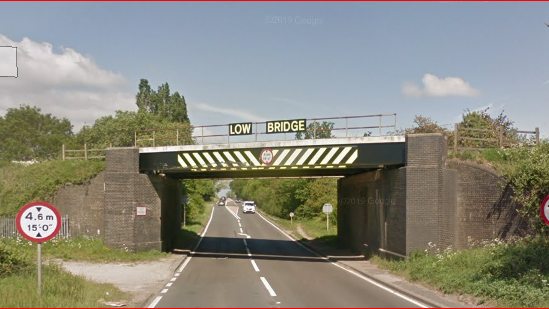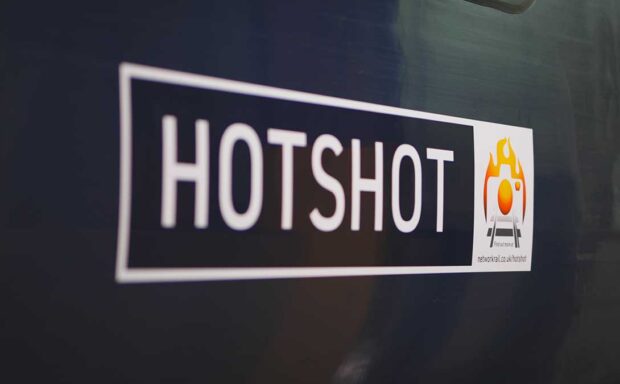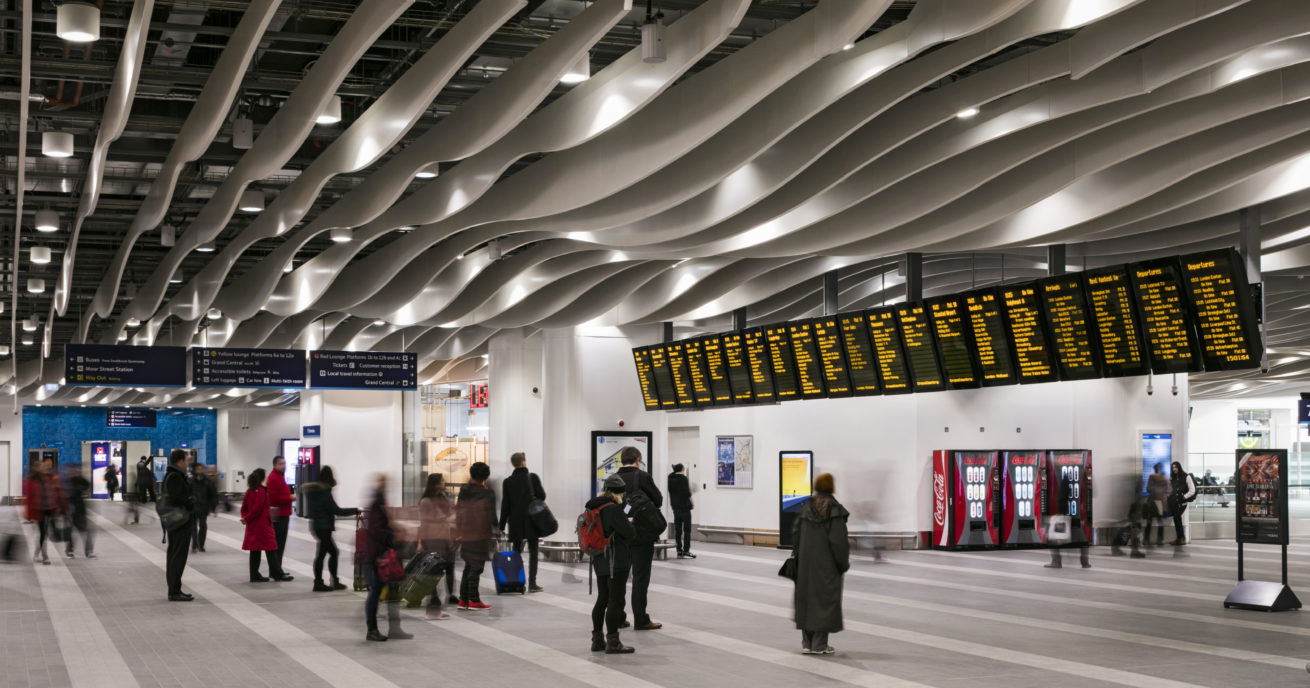Did you know innovative technology is playing an increasing role on the railway?
We’re always researching new technology to help us run a better and more efficient railway for passengers and freight operators all over Britain. In fact, we have a dedicated Accelerated Innovation Programme within our research and development portfolio to develop new ideas, and last year pledged millions of pounds to work with universities to boost research and development.
Here are nine ways tech innovation is improving the railway:
1 – Digital railway
This month, we took another stride in our mission to roll out the Digital Railway – our game-changing strategy to provide better and more journeys as demand for train services continues to rise.
We confirmed Siemens Mobility and Atkins as our partners in a major programme to introduce in-cab signalling on the southern section of the East Coast Main Line – a scheme that will reduce passenger delays by thousands of hours.
The partners will play a critical role in delivering the East Coast Digital Programme (ECDP). The first £350m investment in the ECDP by the government is already being used to begin the introduction of real-time digital signalling on the route, and lay the foundations for wider national roll-out.
The ECDP will be the first intercity digital railway in Britain, fitting trains with the latest in-cab signalling technology and removing the old lineside signals. It will mean that signallers will be able to talk to trains continuously rather than only at fixed points, instructing and responding in real time and reducing delays and significantly improving performance.
2 – Traffic management tech reduces delays
Also in the spring last year, passengers in Wales benefitted from one of our first digital railway initiatives. A traffic management system launched in south Wales to help operators manage the timetable – reducing delays for passengers and freight operators
The Thales ARAMIS system helps more than 300 trains a day. It provides real-time enhanced data to operators, flags potential conflicts and helps train running controllers proactively manage services.
It minimises the knock-on delays that can cause widespread disruption after an incident and allows real time re-planning so services can quickly return to normal.
3 – Cats create new algorithm for safer railway
A new algorithm, combining track circuit and signal berth data to more accurately identify a train’s location at any given time, was the winning entry at this year’s HackTrain VI event – powered by Hack Partners and Network Rail.
The solution – created by CodingCats – found spare capacity in parts of the rail network, providing opportunities for more accurate timetabling and improvements in the operation of the railway.
Other finalists’ ideas combined existing Network Rail data sources with the new developments in data technology. Solutions included a tool providing a 3D model of our railway assets through captured image data and a passenger-facing solution allowing passengers to access different travel options during disruption.
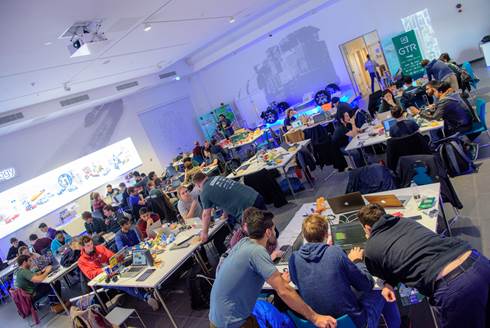
The event was opened by Network Rail chief executive Andrew Haines, who challenged more than 80 innovators in the room to create new solutions for rail that would put passengers first. Subject matter expertise was provided from Network Rail and the wider industry, while Hack Partners worked to drive innovation and recruit the brightest and best to deliver new ideas for the railway.
Network Rail identified eight ideas as part of a design contest which will be taken forward in the post-Hackathon acceleration initiative, receiving dedicated development resource and funding. Since then, six of the ideas have been taken forward with funding, four of which have become projects in our R&D portfolio’s Accelerated Innovation Programme, working closely with our routes.
4 – Augmented reality
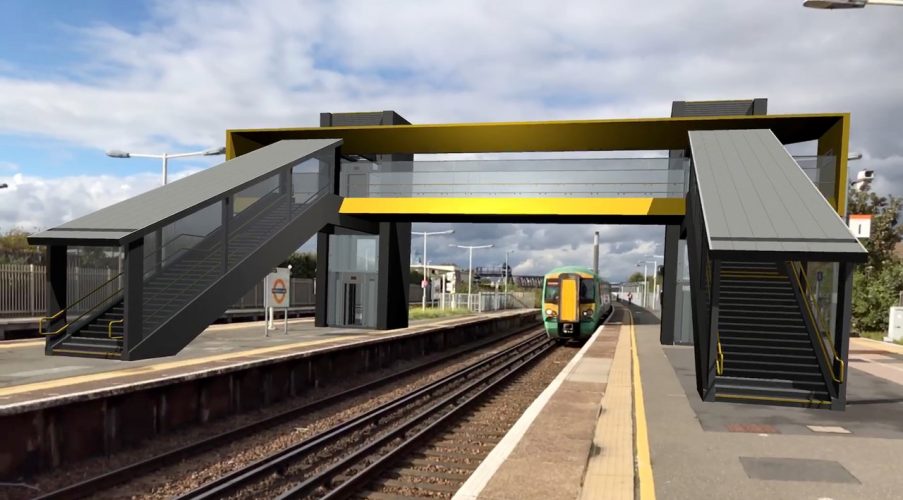
Use of augmented reality (AR) – a first for Network Rail in October – has put architects’ designs into passengers’ smartphones.
Network Rail contributed its design data to an app that enables passengers to use AR to see replacement footbridges at stations. The app will support Network Rail’s engagement with passengers while delivering footbridges across the network throughout Control Period 6 (1 April 2019 to 31 March 2024) and beyond.
The app, called ARki and developed by Darf Design, provides 3D visualisations of planned buildings in situ. Thanks to the collaboration with Network Rail and Wood, ARki now incorporates the footbridges, helping passengers and local communities see their future as Network Rail rolls out its new generation of signature footbridges. Available in the Apple app store from 16 October, the app’s cutting edge AR technology gives Network Rail a new level of engagement with rail users.
5 – 3D and 4D modelling
3D and 4D modelling are helping us execute significant projects, such as the refurbishment of the two-mile long Sevenoaks tunnel and the major upgrade of Liverpool Lime Street station, both in 2018.
In Sevenoaks, our team used several innovations, including 3D modelling. It helped them prove the suitability of special padded sleepers for reducing stress to the Victorian structure and enabling faster train speeds.
Replacing timber sleepers with concrete equivalents has saved time and money. We had initially opted for timber railway sleepers to lower the stress transferred to the tunnel itself. However, the need to cut wooden sleepers to size threatened the schedule and budget. Concrete sleepers with under sleeper pads were thought to reduce load transfer to the structure but this had never been fully explored.
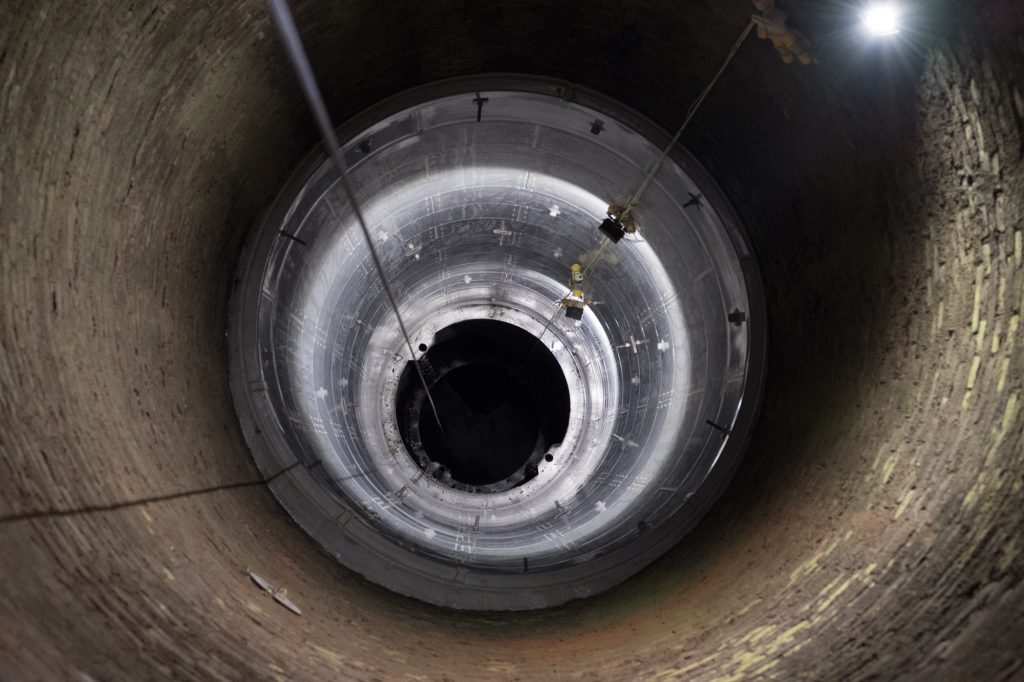
Thanks to 3D modelling, we discovered concrete sleepers with under sleeper pads would be more effective at lowering stresses imposed on the tunnel invert brickwork than the wooden sleepers previously utilised for this purpose.
At Liverpool Lime Street, we used virtual reality to carry out 4D modelling during preparations for the work – an emerging but hugely progressive technology application for the railway.
This reduced the amount of time needed on track and the potential to impact on train services. It also allowed planners to avoid overlaps between different engineering teams and identify potential risks and hazards that could have potentially affected the railway’s reopening.
6 – ‘Listening’ to the railway
SPECTRAIL is a low-cost internet of things sensing platform, which enables intelligent infrastructure to ‘listen’ to the railway and detect problems like wheel flats, cable theft and trespass before they delay passengers. It will support Network Rail’s predict-and-prevent maintenance strategy by enabling data collection at sites previously inaccessible to power or connectivity, or at those deemed too high-cost.
It’s just one of the initiatives coming out of our £245m investment in research and development (R&D) during Control Period 6. The R&D portfolio is finding new and imaginative ways to deliver a better railway and will receive further investment from sources including suppliers and central Government.
Innovate UK, the UK’s innovation agency, is helping us deliver our R&D portfolio and broaden the range of companies that can get involved in expanding the rail network and respond to growing demand.
Other ideas include…
7 – Hubble
Hubble is an artificial intelligence-assisted lineside inspection and maintenance planning solution that will help us boost the resilience of railway infrastructure, reduce delays for passengers and freight users, and reduce maintenance costs.
8 – Alternative gauging methodology
The use of probabilistic methods of gauging to maximise space on the railway. It will assess areas of the West Highlands Line in Scotland and allow rail staff to review the traditional gauging approach against this new method and demonstrate what savings could be achieved in terms of clearance, stepping and intervention.
9 – BVLOS Aerial Robotics
Improving safety of railway staff by automating track inspections, surveys and response to incidents, avoiding the need for staff to physically set foot onto the infrastructure. It will also significantly reduce costs.
Read more:
Rail Week: five times tech has changed the railway
International Women’s Day: Q and A with Kathryn Bishop – virtual reality
Research, development and technology
Rail innovation and development centres
